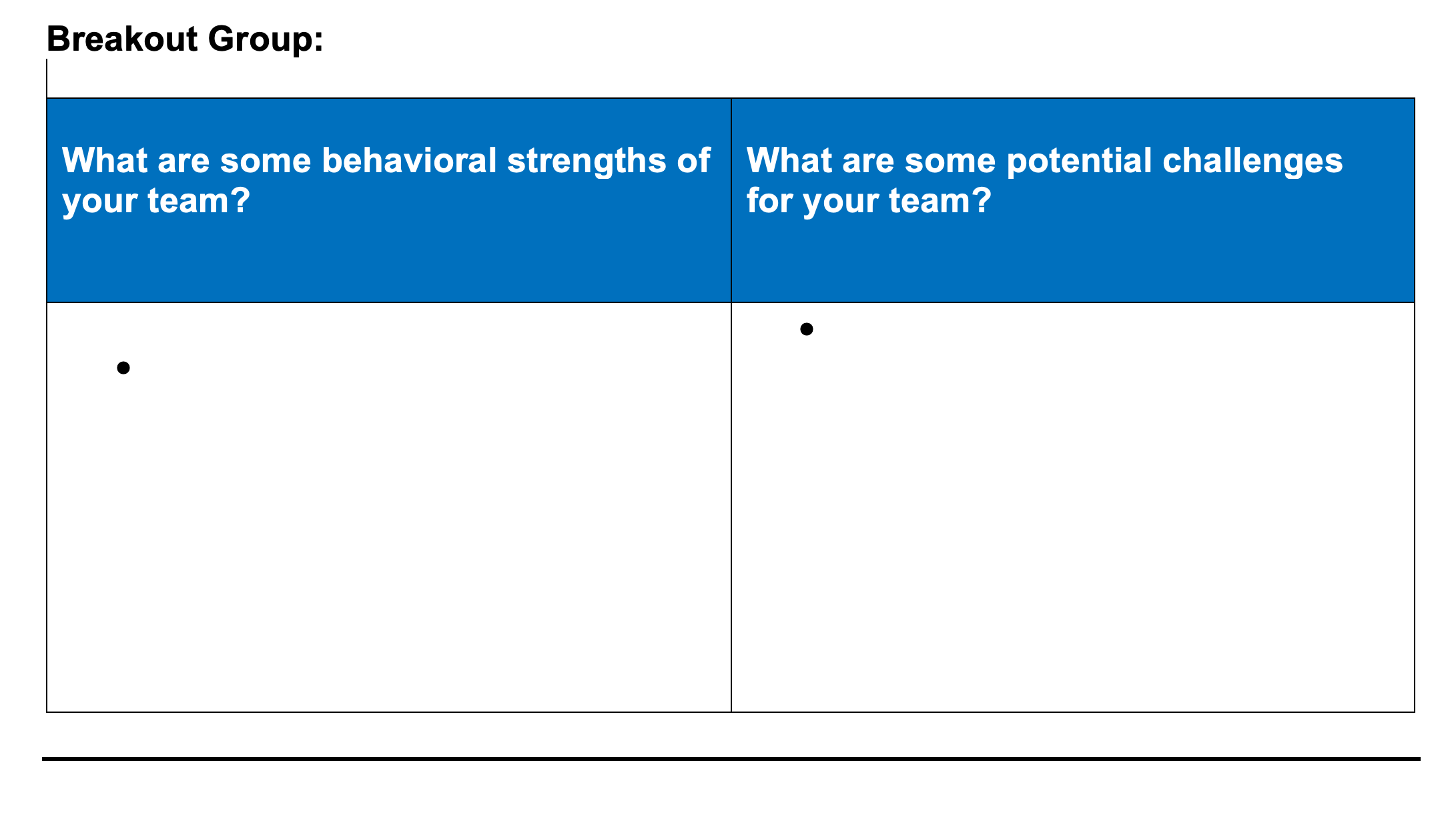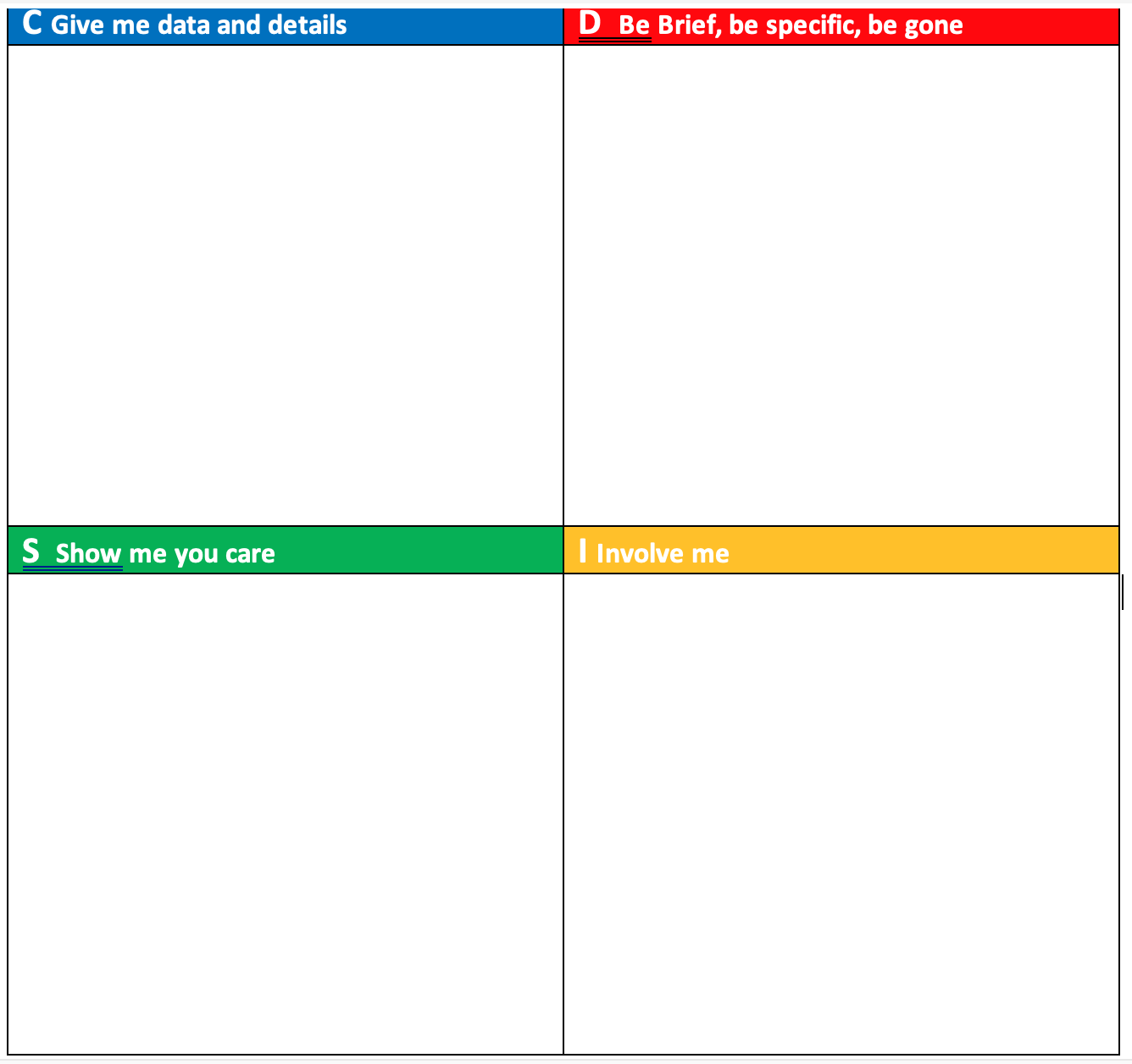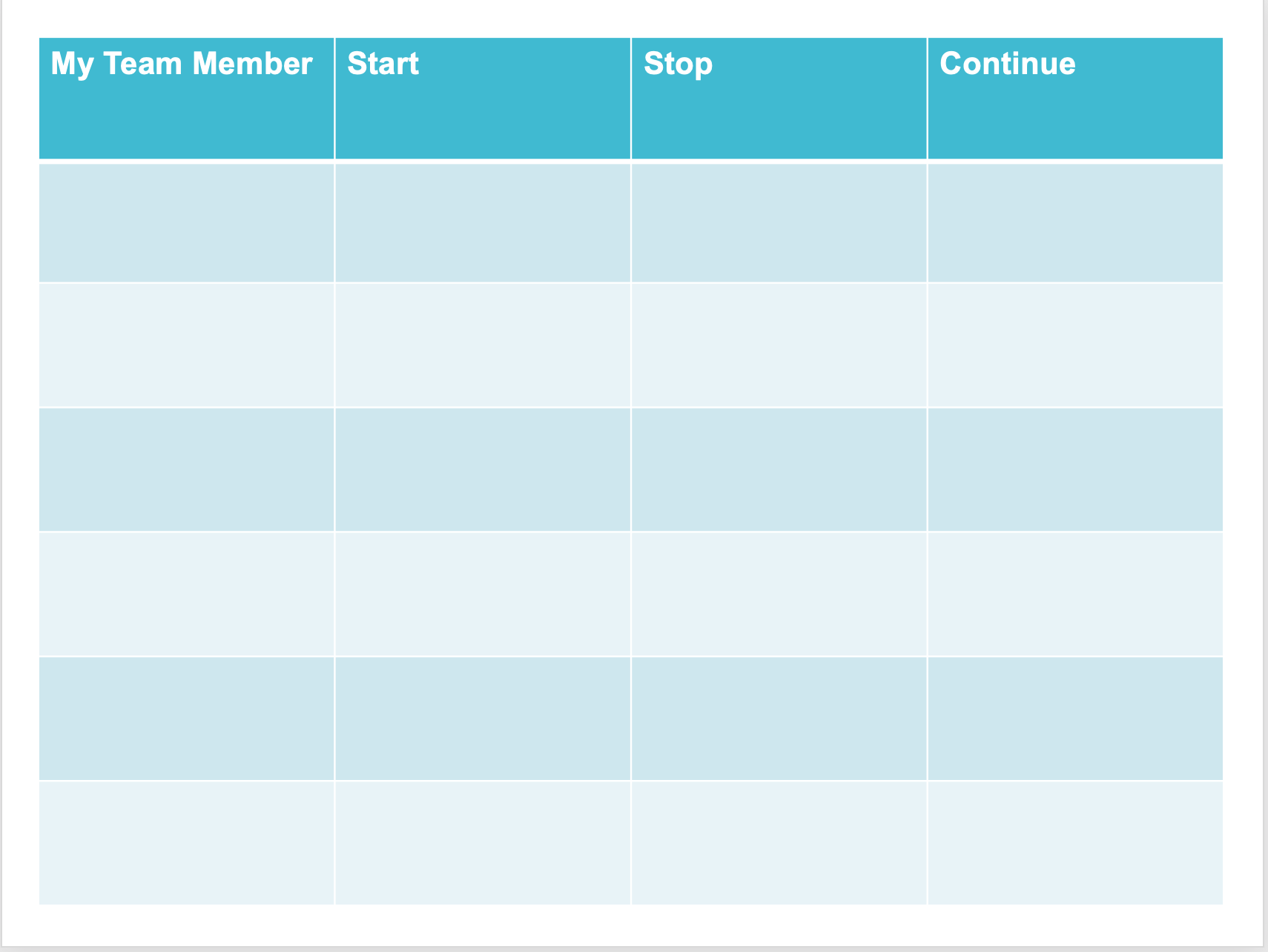Team activities energize DISC sessions, but they also have an important purpose.
 Team DISC activities are an opportunity to focus on a team’s development. Think about it, how often do teams set aside the time to come together to focus on how they can improve interactions and success?
Team DISC activities are an opportunity to focus on a team’s development. Think about it, how often do teams set aside the time to come together to focus on how they can improve interactions and success?
The end goal of a team DISC session is to create talking points; which highlight a team’s strengths, development areas, and dynamics. The most effective sessions occur when team members actively participate and are involved in the session.
Therefore, team activities, are a crucial component to an effective session. Team activities should target practical steps on how DISC can help team members understand each other and their team’s needs. In addition, activities need to provide actionable steps that the team can immediately consider and start using. For instance, how can your team acknowledge and make better adjustments for each team member’s style? How are you using the best strengths of each team member in role assignment and how are you addressing your team’s development areas?
Simple starter tips
Before starting your team session activities, consider the following:
- Set expectations that all team members are encouraged to participate; turn on webcam if it’s a virtual session, create smaller groups/breakout rooms to further encourage input.
- Create a set of mutual agreements for the session.
- Ask for permission to share DISC results before the session, and clearly define expectations during session (e.g., respect, listen, ask).
- Create time and space for discussions – don’t pack sessions; allow participants to set pace.
- Ask team members to have their Individual Reports available to review how they come across to their team members and to help them identify how they can better adjust with team members.
- Share their Extended DISC team map (anonymous or name map) to visually support team discussion and activities.
Team Strengths and Challenges
 The Team Strengths and Challenges Activity is a great activity to do earlier on in your team session. The brainstorming of strengths and challenges for the team can be later compared and discussed when observing and discussing the team’s DISC style maps.
The Team Strengths and Challenges Activity is a great activity to do earlier on in your team session. The brainstorming of strengths and challenges for the team can be later compared and discussed when observing and discussing the team’s DISC style maps.
Break up the team into smaller groups (e.g., 2 – 4 team members per group). Ask group members to think about behavioral strengths and challenges they currently experience. Document input to share with the whole team.
Choose one person from each breakout group to be the scribe and/or one person to be the spokesperson. Combine all group results into one chart and revisit throughout the team session.
As your team reviews their results, have them consider the following:
- Are we using the strengths of our team effectively?
- How are we providing support and training to address our challenges and areas of development?
- Are we assigning tasks and responsibilities effectively based on each team members strengths?
- How do we show up as a team to others (e.g., customers, other teams, leadership)?
- How well do the results from the activity represent our DISC team style?
Tips for Interacting with My Style Activity

Ask each group member to share adjustments others could make to improve interactions with their style. Remind participants their own preferred way of communicating may not be the same for others and it’s a chance to let others know exactly what motivates them in their interactions.
Breakout team into smaller groups (e.g., 2 – 3 team members per group). The styles in each group can be similar or different. The goal of the small groups is to give everyone opportunities to share tips.
Choose one person from the breakout group to be the scribe and one person to be the spokesperson. Make sure everyone has a chance to share at least one adjustment they’d like others to make while interacting with their style. You can give some examples. For instance, ‘as an S style, I appreciate time to process information rather than being asked for an immediate decision.’
Now the team has an action plan that can be updated and edited. Team members can refer back to it as a reminder on how their team members prefer to communicate with them. Remind them to keep asking themselves, ‘are we making the most effective adjustments in our team interactions?’
Creating Our Team’s Adjustment Guide

A variation of tips for adjusting to team members styles is a ‘start, stop, and continue’ approach. We may feel vulnerable with this exercise, but remember, sharing is an important first step to understanding our team members better; which will hopefully create better team dynamics. This exercise works best if there is a level of trust within the team to honestly share with one another. Starting with the manager may be a more comfortable place to start.
Ask each team member to share comments regarding a specific team member. Focus on behaviors.
- What behaviors do you wish, insert team member name, would start doing when interacting with you?
- Next, what behaviors do you wish, insert team member name, would stop doing when interacting with you?
- Finally, what behaviors do you wish, insert team member name, would continue doing when interacting with you?
Continue the process for each individual team member. Ensure the comments are recorded and constructive. Skipping columns (start, stop, continue) is acceptable – whatever people are comfortable sharing.
{{cta(‘dc3c6612-0fc1-4b68-bb32-f79a4f3ff190’)}} Contact us if you are interested in learning about these activities, as well as additional activities and resources available for your team DISC sessions!
